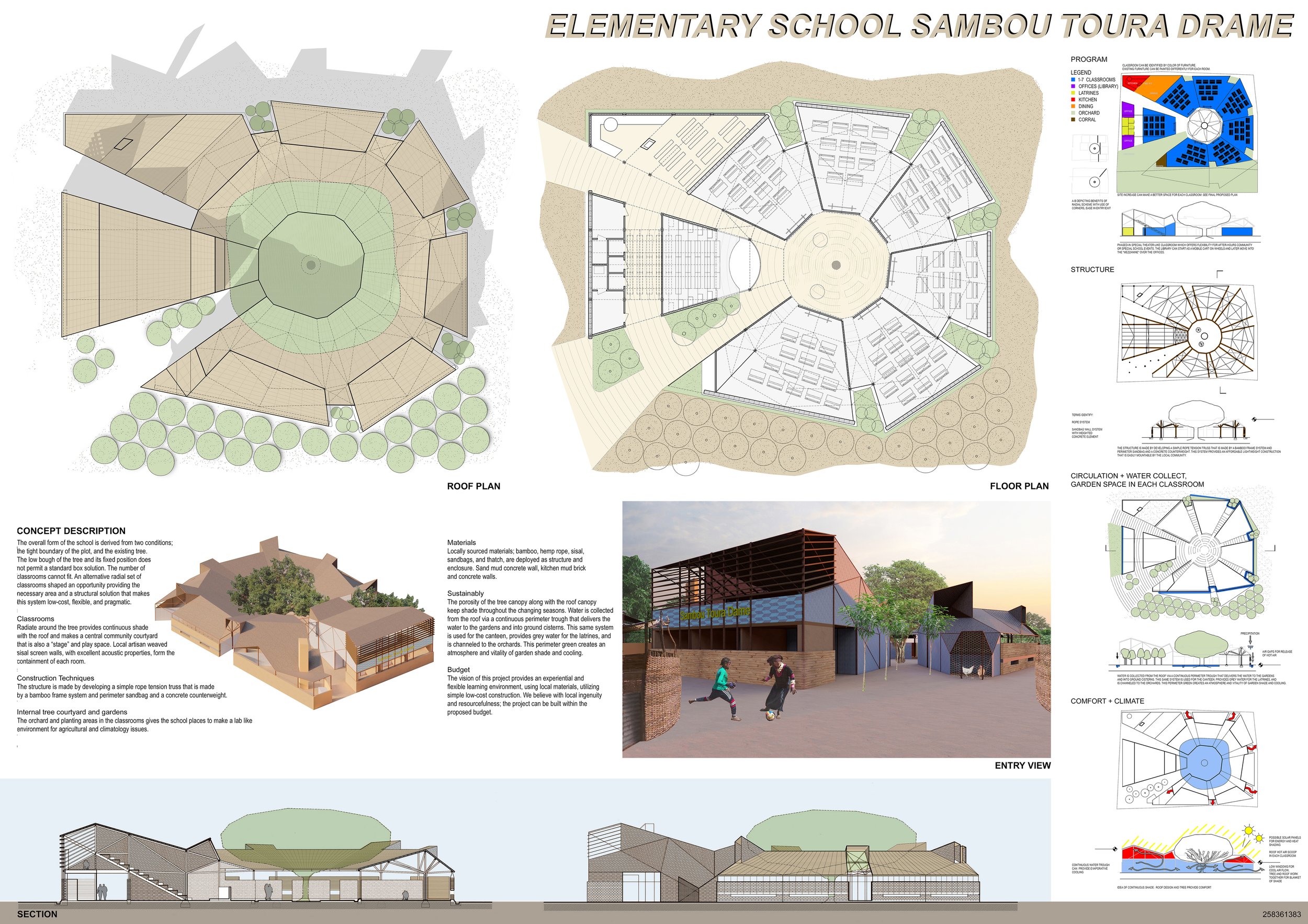Senegal School
Context
We considered the context; we even looked at some plants like the Baobab flower and were inspired by the beauty of all things in the landscape.
Materials
The Approach is to use locally sourced material and to make a system that can create an open lightweight structure. Sisal plants, bamboo plants, and sandbags are the main materials. We started with the sisal, its properties are excellent for pattern making; it can be weaved into a surface or twisted for the rope system. It can also be dyed to further enhance the pattern and give beautiful colors like the many baskets and textiles of the region. Sisal also has acoustical properties. We would ask local artists and the community to be involved in the pattern making. Phasing of the project is carefully considered to plan for a future buildup of finishes as the budget can grow into a longer-term plan. Finishes can enhance acoustics and security and enclosure of the spaces.
Roof
The roof could be metal, but we thought the hatch like similar projects in the area would be better for this lightweight construction system that we have designed.
Ropes
The ropes are not only for the construction system of the roof but also for the play areas like swings on the tree or a 3-D net over the “stage” in front of what we call the special classroom.
Greenspace
The orchard, corral, and planting areas in the classrooms give the school places to make a lab-like environment for agricultural and climatology issues.
Rain collector
The roof shape is the roof collector. The geometry of the roof is traced by a trough at the ground with a connection to water cisterns. The collection of the rainwater is important and part of our foundation detail.
Sustainably
The porosity of the tree canopy and the roof canopy provides continuous shade. This will maintain a level of comfort throughout the seasons. The green spaces in the classrooms are also a great way to amplify comfort, especially in the spirit of the place.



